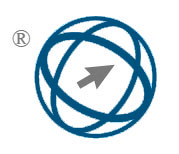Multi-Objective Optimization of Energy Retrofit for Existing Buildings Using an Enhanced Chimp Optimization Algorithm
Abstract
This study proposes a modified multi-objective chimp optimization algorithm (MO-ChOA) to optimize energy consumption retrofits for existing buildings to reduce operational energy consumption. First, a back-propagation neural network was used to predict carbon emission factors, and a mathematical model for multi-objective optimization of building energy consumption was established. Subsequently, Hammersley sequence and somersault foraging heuristic strategy were introduced to improve MO-ChOA, and the improved MO-ChOA was used to solve the multi-objective optimization model of building energy consumption. The experimental results showed that the proposed improved MO-ChOA had a reverse generation distance of 0.113 and a super volume of 0.973, which was superior to the traditional MO-ChOA. This study proposed a modified MO-ChOA to optimize energy consumption retrofits for existing buildings, aiming to reduce operational energy consumption. First, a back-propagation neural network was used to predict carbon emission factors, and a mathematical model for multi-objective optimization of building energy consumption was established. In the optimization of building energy consumption, the proposed method had a solution interval of only 0.110, an average uniformity evaluation index of more than 0.8, a carbon emission saving rate of 0.7-0.95, a cost saving rate of 0.79, and an investment return rate of 0.685, which could effectively reduce carbon emissions and operating costs. The study encourages the development and innovation of energy-saving retrofitting technologies and offers new technical tools and solutions for retrofitting existing buildings with lower energy use.
Full Text:
PDFDOI: https://doi.org/10.31449/inf.v49i33.8410

This work is licensed under a Creative Commons Attribution 3.0 License.









